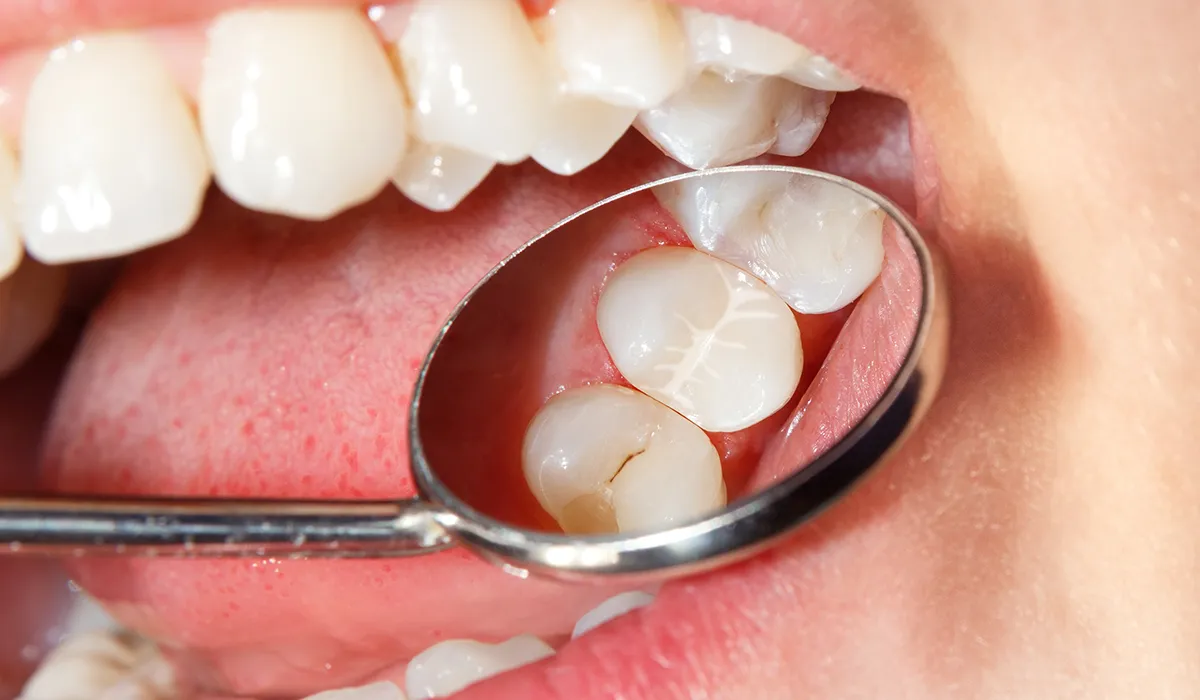As a parent, there’s nothing more heartwarming than seeing your child smile, carefree, confident, and full of joy. And you know better than anyone that behind every healthy smile is a world of love and support. But even the best care at home often needs a little help. Brushing and flossing are essential, but they aren’t always enough to clean the tiny grooves in your child’s back teeth, where food and bacteria love to hide.
If your child is growing their permanent molars or has a history of cavities, fissure sealants could be the simple, pain-free solution to prevent tooth decay before it starts. Let’s take a closer look at how sealants work, why they’re often recommended for children, and what this means for your child’s long-term health and quality of life.
What are fissure sealants?
Fissure sealants are thin, protective coatings—usually made from tooth-coloured resin—that are carefully applied to the chewing surfaces of the back teeth (molars and premolars). These teeth often have deep grooves and narrow pits, known as fissures, which can be difficult to clean properly, even with regular brushing.
Because these grooves are so tiny and hard to reach, food particles and plaque can easily get trapped, creating the perfect environment for tooth decay to begin.
Sealants work by filling in those grooves, creating a smooth, protective layer over the tooth surface. This barrier helps block out food, bacteria, and plaque, significantly lowering the risk of cavities in those vulnerable areas.
It’s a simple, effective way to give your child’s smile an added layer of protection during their most cavity-prone years.

Why kids are especially at risk for cavities
Children’s teeth are more vulnerable to decay than adult teeth for several reasons:
Newly erupted molars are more prone to decay: They haven’t fully hardened yet and can be harder to clean.
Grooves are deeper: Children tend to have naturally deeper pits in their molars, making them a prime target for plaque buildup.
Brushing skills are still developing: Even the most diligent child may struggle to clean every surface of every tooth effectively.
Diet can be high in sugar or starches: Frequent snacking and sweetened drinks increase the acid attacks that lead to decay.
Without intervention, even a small cavity can turn into a big (and expensive) problem, possibly even leading to pain, infection, and premature tooth loss.
How do sealants work?
Think of it like painting on protection. Just as paint shields timber from the elements, fissure sealants guard your child’s teeth against decay. It’s a simple, painless process—needle-free and done in just minutes per tooth.

Here’s how it works:
1. Clean canvas: The dentist begins by gently cleaning the tooth’s surface—removing plaque or debris—then dries it to create a clean base.
2. Priming the surface: A special etching solution is applied to the chewing surface, much like a primer. This helps the sealant bond securely to the tooth.
3. Painting the protection: A thin layer of liquid resin is carefully brushed into the natural grooves and pits—those tricky spots where food and bacteria love to hide.
4. Setting the seal: A dental curing light hardens the sealant, creating a strong, invisible shield that helps block out cavity-causing bacteria.
Once applied, the tooth is ready to face everyday chewing, brushing, and snacking, with a strong line of defence against cavity-causing bacteria.
With proper oral care and regular dental checkups, sealants can last several years. And if they wear down over time, your dentist can easily touch them up to keep your child’s protection going strong.
Why bother getting sealants?
Powerful cavity protection: Studies show that sealants reduce the risk of cavities in molars by up to 80%. That’s a huge leap toward better oral health.
Pain-free and non-invasive: No needles. No drilling. No discomfort. Sealants are applied easily and comfortably in one visit.
Long-term cost savings: Preventing decay means avoiding fillings, crowns, or even root canals later on—saving you money and your child from future stress.
Confidence boost: A healthy, pain-free mouth lets your child focus on what matters: school, play, and smiling widely without worry.
Better overall health: Good oral health is linked to better nutrition, fewer school absences, and improved self-esteem. Sealants are one more tool to support your child’s well-being.
What age is best for sealants?
Most dentists recommend sealants when the first and second permanent molars erupt, typically around ages 6 and 12. However, some children with deep grooves in their baby teeth may also benefit from early sealant protection.
Your dentist will evaluate your child’s mouth and let you know when it’s the right time.
Sealants—and what else?
Fissure sealants are a great help, but they are just one part of the picture. To give your child the best chance at a lifelong healthy smile, keep their oral hygiene routine strong. Encourage them to brush twice a day with fluoride toothpaste, floss daily to clean between the teeth, and visit the dentist every six months for checkups, professional cleaning, and sealant reviews. And remember—sealants are not a free pass for sugary snacks and drinks!
Don’t wait until cavities hit—prevent them early
Your child’s smile deserves more than just reactive care—it deserves proactive protection. Fissure sealants are a safe, effective, and affordable way to prevent cavities before they start. Combined with healthy daily habits and regular dental visits, they help set the foundation for strong, confident smiles that last a lifetime.
Don’t wait for decay to take hold. Get in touch with your dentist for personalised advice on whether fissure sealants are right for your child. This simple step can make a big difference, preventing cavities today and into the future!


